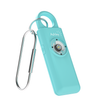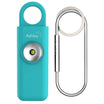We’ve all heard that dogs are our best friends, but what happens when our furry companions are dealing with invisible battles of their own – anxieties that can disrupt their happiness and overall wellbeing? Anxiety in dogs is a lot more common than we believe, and often, due to their inability to articulate their feelings, it can be dismissed. Like human anxiety, canine anxiety can be caused by various factors and can take a toll on your pet’s daily life.
Before we embark on the journey to explore alleviating measures for our four-legged pals, it’s crucial that we extend our understanding of the subject. This insightful article delves into the prevalence of canine anxiety, the effects it has on owners, and discusses a wide array of solutions, both medical and behavioral. From tried-and-true methods to emerging solutions like CBD oil and tPEMF therapy, our primary goal is to equip you with tools to help manage and decrease anxiety in your dogs.
As you continue reading, remember that each dog's situation is unique, and what works for one might not work for another. Let's begin this essential discussion with a deep look into the increasing prevalence of canine anxiety. Let’s explore ways to empower you and your furry friends to deal with canine anxiety effectively for a healthier, happier, and more enjoyable bond.
Increasing Prevalence of Canine Anxiety
It seems like anxiety isn't exclusively a human condition anymore - our beloved four-legged friends have also fallen prey to this emotional turmoil. The prevalence of canine anxiety is escalating alarmingly, affecting the quality of life for our furry companions. The heart-wrenching reality is, dogs can't verbalize their internal struggle, making it even more urgent for us, their human pals, to understand, empathize, and make efforts to alleviate it.
Current Anxiety Rates
The distressing surge in dog anxiety is apparent in recent statistics. Almost half of our pets, 43.52% to be precise, experience anxiety elicited by other cats or dogs. Separation anxiety, probably one of the most widely recognized forms of canine anxiety, is close behind at 52%. Alarmingly, a whopping 57.41% of dogs exhibit stressed behavior due to loud noises. That's a 77% increase since 2020! An overwhelming 70%+ dogs currently exhibit signs of anxiety in one form or another. We're looking at a dog-anxiety pandemic here!
Causes of Canine Anxiety
Now that we've understood the extent of the problem, it's crucial to peek into the causes. So, what triggers anxiety in dogs? The answer, much like us humans, is varied and individual-specific. However, some common factors include loud noises, being left alone (leading to separation anxiety), encounters with other pets, and traumatic past experiences.
While these triggers may seem innocuous to us, they can induce an immense amount of stress in our pets. Recognizing these signs early and seeking professional advice is paramount in ensuring our furry friends can lead an anxiety-free, happy life.
As we journey together on this quest to safeguard our pets' health, it is fascinating to delve into an article titled Taking the Bite Out of Anxiety. With a plethora of intuitive strategies, this article offers a treasure trove to help us navigate through dog anxiety, and hopefully, take a step in alleviating it. Our dogs deserve to enjoy the world, anxiety-free.
Effects of Canine Anxiety on Owners
As pet parents, we all adore our furry friends. They're more than just pets—they're our family. But what happens when our seemingly jovial puppy or mature dog shows signs of anxiety? Do we, as their human counterparts, sense their distress? If so, how does this affect us? To delve into this, it's crucial to first acknowledge the known benefits pets have on our health.
Positive Impact of Pets on Mental Health
For most pet owners, the joy of pet ownership isn't just about having an incredibly cute companion. To us, they provide emotional support, enhance our physical health, and boost our day-to-day mood. And we're not just talking anecdotal evidence. Statistics show that 86% of pet owners believe their pets have a positive impact on their mental health.
Here are some ways dogs/pets have been proven to improve owners’ psychological well-being:
- Reduced stress levels: Interacting and playing with our pets help in stress relief. Imagine a tough day at work and coming home to a wildly wagging tail! It's an instant heart-warmer.
- Enhanced mood: Pets have a knack for spreading positivity. Their innocent actions and playfulness fill our hearts with joy and happiness.
- Combat loneliness: Sometimes, all you need is a furry friend by your side to take away those pesky feelings of isolation and loneliness.
Among owners who recorded a marked improvement in their mental health, 74% clarified that this positive change occurred following the acquisition of a pet.
Pet Owners' Perception of Their Pets' Anxiety
Still, just like humans, dogs too can suffer from anxiety. This uneasy change in their behavior isn’t lost on us, as reflected by the national average anxiety rating; it's 2.9 for dog owners and even higher for dogs at 3.9. This discrepancy raises an intriguing question: Are we feeling our pets' anxiety?
In simple terms, yes, we are. As sensitive pet parents, we may naturally absorb some of the emotional turmoil experienced by our pups, especially when we can't figure out how best to help. But there's a silver lining to this. Acknowledging our pet's anxiety is the first and most crucial step in resolving it. Thanks to this recognition, many pet owners have sought professional help and personal growth solutions, including our resource on Creating a Calm Environment which provides helpful tips to ease pet anxiety.
In closing, caring for an anxious pet can be an emotional journey. Yet, it's this very experience that deepens our bond with them. And as we uncover ways to help our pets, we are, in effect, also helping ourselves.
Behavioral and Medical Interventions for Canine Anxiety
When it comes to our furry friends, watching them experience symptoms of anxiety can be heartbreaking. There might be shaking, excessive barking, or even destructive behavior. However, with behavioral and medical interventions, we can help make the world a little less scary for our dogs. From specialized training techniques to medical treatment and physical stimulation, there are ways to alleviate your dog's anxiety and help them live a happier, healthier life.
Behavior Modification and Training
The cornerstone of any strategy to manage canine anxiety is behavior modification. Desensitization and counter-conditioning are two highly effective strategies. These methods essentially teach our dogs to associate their fear-creating experiences with positive ones. So that dreaded thunderstorm or fireworks night all of a sudden doesn't seem so scary to them. Implementing these techniques requires patience and understanding. Just like humans, each dog's response can vary, but with time we often see a marked improvement in anxiety symptoms.
Here's a quick rundown on these methods:
- Desensitization is all about gradually exposing your dog to the anxiety-provoking situation at a level they can handle, and slowly increasing their exposure as they become desensitized.
- Counter-Conditioning is changing your dog’s emotional response to the anxiety-provoking situation. Instead of fear, we want to instill positive associations, which we can achieve through rewards like treats and affection.
Medication Use
While behavior modification and training are significant first steps, for some dogs, medication may be needed to manage their anxiety more effectively. Medications like Trazodone and Benzodiazepines can be quite effective when used in combination with behavioral modification. We must remember though, these medications aren't a miracle cure, but they can help make the world a little less overwhelming for our dogs.
Physical Activities
And let's not forget the magic of a good ol' physical activity session! Regular exercise and mental stimulation produce endorphins – nature's own stress busters and promote overall feelings of happiness. Whether it's a game of fetch, a rigorous walk, or a puzzle toy like a Lick Mats Reduce Anxiety, physical activity can effectively reduce anxiety in dogs.
In the end, patience, understanding, and a whole lot of love are our best tools. With time, we can help our canine companions navigate their fears and anxieties, returning to their lovable, tail-wagging selves.
Emerging Solutions and Studies on Canine Anxiety
As pet parents, we are constantly looking for ways to ease our fur babies' discomfort. One issue that's often overlooked but is a significant problem for many dogs is anxiety. From separation distress to fear of loud noises, our four-legged companions can experience anxiety in multiple forms. It can be heartbreaking to see our lovable pooches in such a state of distress. However, the good news is that recent studies and breakthroughs are paving the way for new and effective treatment methods. In this section, we will delve into two such emerging solutions for canine anxiety: the use of CBD oil and tPEMF treatment.
CBD Oil Use
You might have heard about CBD oil as a promising natural remedy in human medicine, but did you know it's becoming increasingly popular for pet treatment as well? Research has shown that CBD oil can significantly decrease anxiety-related behaviors in dogs.
CBD, or cannabidiol, is a compound found in industrial hemp and has numerous therapeutic effects without the psychoactive high associated with marijuana, making it safe for our furry friends. Let's list some of the benefits of CBD oils for dogs:
- It reduces inflammation and pain
- It promotes relaxation and eases nervousness
- It can improve sleep and appetite
- It boosts the overall immune function
We're optimistic about these promising results, and encourage pet parents to seek advice from their vet before starting any new treatment.
tPEMF Treatment
Next on our list is a relatively fresh but promising modality, tPEMF treatment. tPEMF stands for targeted pulsed electromagnetic field therapy. Putting aside the technical jargon, this therapy uses magnetic pulses to stimulate cell activity in the dog's body, thereby reducing anxiety.
The non-invasive nature of tPEMF therapy and its potential effectiveness make it an enticing option. It's worth mentioning that tPEMF devices are typically comfortable, and dogs generally respond well to the treatment.
- They're light and easy to use
- Dogs typically don't resist the treatment
- There's no significant side effect or risk involved
These are still early days for tPEMF treatment in dogs, and more exploration and studies are on their way. But from what we've seen so far, it looks like a promising solution.
While pet anxiety is an issue we all would love to eradicate entirely, present-day advancements are undoubtedly paving the way for more effective treatments. Understanding which option works best for your pet is key, and it's always advisable to discuss these treatments with your vet before proceeding. Stay tuned for more such updates on our blog and don't forget to check the Latest Trends in Pet Anxiety Relief for more insights.
Managing and Decreasing Canine Anxiety
We all want the very best for our furry friends, but sometimes, despite our best efforts, our pups can show signs of anxiety. How we manage and decrease canine anxiety can make a world of difference in their well-being and quality of life. Today, we're here to talk about strategies you can use to conquer this situation.
Addressing the Root Cause
Knowledge is power when it comes to managing canine anxiety. Many pet parents are quick to notice when their dog is showing signs of anxiety, like excessive panting or pacing, but few actually dig deeper. It's essential to understand the root cause of the stress to ascertain the most effective methods for symptom management. Maybe your dog gets anxious when left alone, or they could be terrified of loud noises. Determining and addressing what's causing their anxiety will more likely prompt an effective and lasting solution.
Comforting an Anxious Dog
There's nothing that warms the heart more than seeing a content, happy, and relaxed pooch. Comforting an anxious dog is about more than just soothing them in the moment; it provides them with the security and assurance they need to thrive. Simple actions, like close cuddling, soft strokes, and calm, reassuring speech, can convey your support and love to your fur-baby. Furthermore, consider incorporating some Essential Products for Pet Wellness into your strategy. With the right selection, these items can significantly enhance your endeavors at infusing comfort and serenity into your pet's life.
Distraction Techniques
Sometimes, distraction is the best policy. This rings true particularly with dogs who exhibit anxious behaviors. The old adage "Out of sight, out of mind" applies here. Deploying distraction techniques like favorite treats, exciting toys, or engaging in stimulating activities can redirect their focus away from the source of anxiety. By occupying their minds with positive stimuli, we can alleviate their stress and foster a healthier, happier mindset.
To sum it up, addressing the root cause, comforting your pet, and distraction methods make up the core formula for managing and decreasing canine anxiety. Remember, our pets are part of the family, and we must take their mental health as seriously as we take our own.
Conclusion
Navigating canine anxiety can indeed pose some complexities, but never let it dissuade you from the unique joy of pet ownership. At "Empowered by Ashley", we believe nothing is more gratifying than ensuring our furry friends' well-being. The array of effective interventions, from behavioural modification to emerging treatments like tPEMF, are useful tools. Customising these techniques as per your pet's specific needs can ensure their overall happiness.
As we've understood, managing and decreasing canine anxiety involves addressing its root cause, providing comfort, and using productive distraction techniques. Keep in mind, though; these strategies may take time and patience, but reward you with an emotionally healthy pet.
Through our commitment to pet well-being, we've also designed specific products to alleviate concerns about pet safety. Empowering you and your pet towards a confident, anxiety-free existence, we're here to make a meaningful difference in your lives.
Finally, remember that you're not alone in this journey. A community of pet owners shares your concerns and successes, and together, we can ensure our pets live their best lives. Visit Empowered by Ashley for more tips and resources on maintaining your dog's emotional health. Let's empower each other as we continue this rewarding journey of pet parenthood.
Frequently Asked Questions
-
What are some common signs of dog anxiety?
Common signs of dog anxiety include excessive panting, pacing, trembling, restlessness, destructive behavior, barking or howling, and avoiding social interactions.
-
Do dogs of all breeds and ages experience anxiety?
Yes, dogs of all breeds and ages can experience anxiety. It can be triggered by various factors such as separation from their owner, loud noises, changes in routine, or past traumatic experiences.
-
How can I help calm my anxious dog?
There are several effective solutions to calm an anxious dog, including providing a safe and quiet space, using calming pheromone diffusers or sprays, engaging in regular exercise, using anxiety wraps or vests, and providing mental stimulation through interactive toys or puzzles.
-
Should I consider using medication to treat my dog's anxiety?
If your dog's anxiety is severe and impacting their quality of life, you should consult with a veterinarian who can assess the situation and determine if medication is necessary. Medications may be prescribed to alleviate anxiety symptoms temporarily or as part of a long-term treatment plan.
-
Can professional training help with dog anxiety?
Yes, professional training can be beneficial in addressing dog anxiety. Trainers can help identify triggers, teach relaxation techniques, and modify behavior through positive reinforcement and desensitization methods.















Leave a comment
This site is protected by hCaptcha and the hCaptcha Privacy Policy and Terms of Service apply.